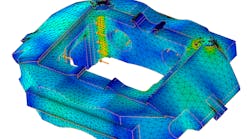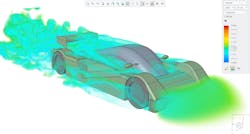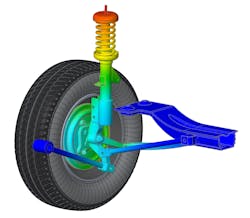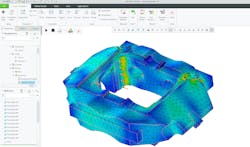From Drafter to Innovator: The Evolution of the Design Engineer
Smart devices, 3D printing, internet search engines, and Artificial Intelligence (AI) are clear examples of innovation. And while advancements don’t have to change the world, innovation is nonetheless a requirement in today’s competitive environment.
A report in the Strategic Management Journal (The effect of introducing important incremental innovations on market share and business survival) reads: “The more often an industry incumbent was among the first to introduce important incremental product innovations the greater its market share, while adopting innovations that had been introduced by competitors had a small positive relationship with greater market share. The greater the number of competitors that introduced similar products, the greater the market share of firms that were first to market.”
There is a direct and measurable correlation between innovation and market share. And the technologies and practices that fuel them are critical.
In the Beginning
The seeds of modern design were sown in 1765 by Gaspard Monge. The French mathematician is widely credited as the founder of descriptive geometry and technical drawing. His dissertation Descriptive Geometry had two objectives:
- To establish reliable methods to represent 3D objects on paper.
- And to provide the means to recognize an exact description of the forms of solids and derive all truths resulting from their forms and respective positions.
Monge’s work provided the analytical foundation for the creative thinking and new machinery that would fuel the industrial revolution - and slowly evolve into today’s Computer-Aided Design (CAD) technologies.
Computer-Aided Design
Over the years, product design has methodically evolved using a more sophisticated toolset which provided a greater opportunity to innovate. Until the latter part of the 20th century, manual/physical design tools, consisting largely of vellum paper, ruling pens, triangles, scales, T-squares, and compass, were employed to create detailed drawings on paper allowing concepts to be visually scrutinized before numerous prototypes were built and tested.
Using these design tools, the product development process was a sequential and prolonged “build it, break it” process, relying on a series of costly prototypes to understand how concepts would perform within the physics of the real-world.
In the 1960s, organizations were taking advantage of new computer technology to develop in-house computer-assisted capabilities to support specific needs and applications. Throughout the following decade, more generalized commercial design software emerged allowing designers to build 3D representations and better understand the inner workings of systems and components.
Reducing the number of physical prototypes needed to validate designs saved time, lowered costs, and provided an opportunity for many more design concepts to be explored leading to more optimal products. Product innovation took a considerable leap forward as organizations began to place a growing emphasis on creative design, product differentiation, and their impact on market share.
Computer-Aided Engineering
For roughly 200 years the evolution of product design was more like watching a tree grow than a rocket launch. But the rise of computer technology in the second half of the 20th century had a profound impact on product design and innovation.
About the same time, in the 1960s and 1970s, Computer-Aided Engineering (CAE), or simulation concepts, were being developed to create mathematical models that captured strength, fatigue, stress, deformation, and other characteristics of structural integrity and failure. Simulating the effects of loads, forces, and other real-world conditions on designs at the system, sub-system, or component levels began to reduce the dependency on physical prototype building and testing.
Armed with a better estimation of the design’s performance over a range of parameters, design teams had more information and time to consider a wider scope of product features and alternatives – and design space exploration became feasible.
However, because of the complexity, and generally obscure nature of the user interfaces, this simulation capability was restricted to CAE experts who combined their knowledge and experience of particular software applications with product knowledge. And things would remain this way for decades. Simulation was exclusively for the experts, and there was little trust in anyone outside that circle to perform simulations safely and accurately.
Simulation-Led Design
While CAE technology advanced product development considerably, a stubborn roadblock to broadening its use was that the approach was reliant upon and limited to a small group of experts to perform analysis and simulations and the analysis of the results. This hand-off often meant that the designer had to wait for analysts to work through a long backlog of projects. And, with higher-profile projects taking priority, it was not uncommon for CAE reports to be delayed by weeks or longer.
This limiting factor, and a driving business need to do more simulations faster, led naturally (as it has in other technology domains) to the need for democratizing simulation - that is to empower non-CAE experts with the tools, knowledge, and support to safely perform simulations - without a constant need for the experts.
This is a requirement for Simulation-Led Design (SLD). As its name suggests, SLD leverages simulation throughout the product development process, driving designs towards optimality, given the requirements. This accelerates product development and advances innovation considerably when compared to the traditional serial approach.
SLD not only reduces costs but optimizes product performance and advances innovation by allowing designers to digitally explore substantially more product design iterations by asking “what if?” and getting the answers quickly. Furthermore, as these designs have been more thoroughly validated against the requirements, failures in the field are reduced, which of course reduces product recalls and warranty costs.
Generating Results
SLD tools are currently at work and impacting innovation in many leading manufacturers and product development organizations. According to a study cited by PTC, Inc., implementing SLD has increased product innovation through broadening design space exploration by 40-60%.
American Axle & Manufacturing, Inc. (AAM) is just one example of how moving analysis into the design space advances innovation. In an Ora Research case study, AAM Executive Director of Product Engineering, Glen Steyer explained the impact of making simulation more accessible to non-CAE experts and designers.
“Traditional analysis processes spend too much time down in the mechanics of their specific disciplines, rather than innovating and creating at the product level.” Steyer goes on to say, “(By forward-deploying analysis), you can move much more deeply into innovating product architectural dynamics up front in the design process.”
There are many resources available to those interested in exploring how to safely extend the use of simulation to designers, engineers, and beyond – and PTC and Ansys are among the software providers offering these tools.
- Ansys Discover Live allows engineers to evaluate multiple designs quickly with live physics simulation, then refine designs with simulation results backed by Ansys solvers. It can also power cross-team collaboration in Discovery with direct transfer to Ansys Mechanical and Fluent simulation software to simulate more complex physical behaviors.
- PTC’s Creo Simulation Live contains a comprehensive set of finite elements analysis capabilities including structural, thermal, and vibration analysis solutions allowing users to analyze and validate the performance of 3D designs.
A Concurrent Workflow
Today design and analysis, or more precisely - the confluence of design and analysis - holds the key to the next wave of product innovation and the democratization of simulation is an essential enabler. Veteran engineering technology reporter, Kenneth Wong, explained that two decades ago, CAD-integrated simulation was not the norm. But because some industry leading programs began adding simple stress analysis in their CAD packages, simulation-led design blossomed.
“I'm glad to see that many designers can, if they want to, perform some preliminary stress and flow analyses from their design environment,” he said. “It was not practical to evaluate multiple designs in a sequential workflow. But the shift to concurrent workflow where design and simulation occur simultaneously, and the emergence of on-demand cloud computing, made it possible for engineering teams to evaluate multiple design variants in a reasonable time.”
For decades, a deep chasm separated design from analysis – product designers from simulation experts. Today, these product development disciplines are being bridged, even merged, through an integrated approach known as Simulation-Led Design.
Pushing analysis into all phases of the product lifecycle, even upstream to the earliest conceptual phases, accelerates product development, empowers engineering design teams, turbocharges product innovation, and provides a greater opportunity to capture market share.
This article was written and contributed by Robert Farrell, President of Farrell MarCom, LLC, and Co-Founder of Revolution in Simulation.Org.




